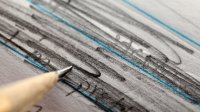The Mistake-Friendly Classroom
Learning from mistakes is crucial for growth. Here are a few ways teachers can prepare to take advantage of them.
Your content has been saved!
Go to My Saved Content.“Mistakes are a natural part of learning,” writes education consultant, lawyer, and former math teacher Colin Seale in Cult of Pedagogy, “but students cannot develop into critical thinkers if they regularly freeze out of the fear of making a mistake.” Author of the book Thinking Like a Lawyer, Seale works with teachers and schools on how to incorporate critical thinking strategies into their curriculum.
Seale has a point: Mistakes are crucial if we are to learn. As Youki Terada has written for Edutopia, “Mistakes are crucial pieces of information that force a cognitive reckoning, pushing the brain to reconcile contradictory information and build more accurate, durable solutions.” Terada cites a point made by Carol Dweck, author of Mindset: The New Psychology of Success: “Every time a student makes a mistake… they grow a synapse.”
Interestingly, a student’s level of confidence in a mistake plays a role in their learning. A research review in The Annual Review of Psychology suggests that when students strongly believe their answer is correct, they’re better primed to learn than if they’re hesitant: “Because they are surprised (and perhaps embarrassed) at having made a mistake on a response they strongly thought was correct, individuals may rally their attentional resources to better remember the correct answer.”
The key, though, is not stigmatizing mistakes—or the students who make them. In a mistake-friendly classroom, teachers can use errors as opportunities to assess how students are understanding course content and to support their critical thinking skills. Seale suggests that teachers regularly engage in mistake analysis—giving serious thought to the ways students are likely to get off-track in a lesson—to create an environment in which mistakes are embraced and critical thinking becomes a natural part of the curriculum.
Seale regards this as an aspect of educational equity. “Critical thinking should not be a luxury good,” he writes, “but our current system often treats it that way, setting aside this kind of challenging work for only the most advanced students.” He argues that if students are afraid to make mistakes, they are denied the opportunity to “lead, innovate, and break the things that must be broken as a core part of their educational experience.”
How to Make the Most of Mistakes
Anticipate “good” mistakes and cultivate student confidence: It’s good practice to build opportunities for student guesswork into your teaching, a strategy that engages productive struggle and boosts learning.
Seale suggests that teachers plan for “good” mistakes—seemingly off-base answers like confusing opinions with facts or going off-track when adding fractions with different denominators. By thinking ahead about why a student might make a mistake, you’ll be better prepared to help them deconstruct it and arrive at a better conclusion.
Engage with good mistakes as they happen: Seale suggests embracing good mistakes as openings for rich inquiry. “They offer a lot of opportunities for learning, and some of them have the potential to be magic,” he writes. Rather than dismissing a wrong answer, try asking, “What makes you say that?” When you explore the why, you might be surprised by an astute connection the student has made—one that presents an opportunity to make still more connections.
Have students create good mistakes on purpose: “When we have students anticipate the most predictable mistakes that might be made on a task, we’re moving well beyond that lower level of test-taking skills and instead, getting students to think like test-makers, coming up with viable (but incorrect) options on a multiple-choice test,” Seale says.
Try asking your students to think of three incorrect but good responses to a prompt. They’ll likely come up with logical possibilities, which will help them make connections among ideas and build their critical thinking skills.
Seale suggests having students follow what he calls the “Joe Schmo rule”: Ask them to create answers that would trip up the average person who always falls for trick answers. “Instead of letting students come up with crazy, nonsensical options, this rule keeps the exercise at a challenging metacognitive level,” he says.
Ask students which wrong answer is more right: It’s often the case that one answer is more right than another—that there’s some element of correctness even in incorrect answers. That creates an opportunity to tease out subtleties.
Seale suggests offering students two equations that are both wrong, where one is wrong conceptually and the other computationally. Or offer two paragraphs, one with structural errors, the other flawed by grammatical mistakes. Seale believes that “asking which wrong is more ‘right’ helps learners shift from asking ‘what’ and ‘how to’ to asking ‘why’ and ‘what if’—a necessary shift for giving students the tools to not just analyze the world as it is, but imagine it as it ought to be.”
